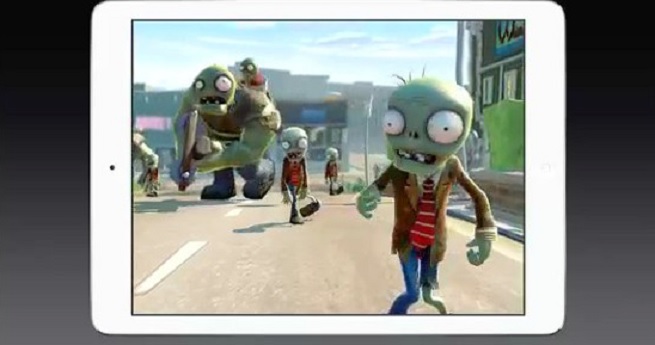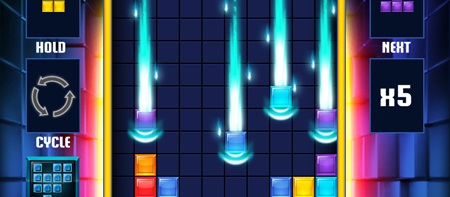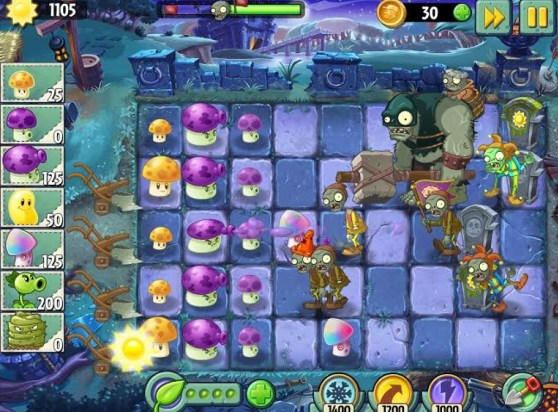GamesBeat: You have something that worked in The Simpsons. Have you figured out what that is and how to bring that over?
Gibeau: I would argue that, when I started back about seven months ago, the two studios we had that were extremely good were The Simpsons studio, our Prince Edward Island group, and then the Fire Monkeys team. Those were developers who had been in the mobile business for a very long time. Popcap has started to double down on mobile and moved out of social and PC. Garden Warfare on the console was alongside that. But between Popcap, Fire Monkeys, and PEI, EA has three of the best developers in the world for the type of content that makes sense on mobile.
The idea is to get the rest of the studios to that same level of performance while we master live services across the board. We definitely have pockets of excellence. We just need to be more consistent overall across the whole unit.
GamesBeat: What’s the mix you would envision for born-on-mobile brands versus brands you would carry over from console?
Gibeau: They’re not just console brands. They’d be brands that were on PC or Amiga or Sega Genesis. The born-on-mobile, you could argue, are things like Real Racing and The Simpsons, where we have a tremendous amount of success. It’s going to be a mix. We’re going to have a mix of new IP that you’ve never seen before.
The beauty of mobile is it’s relatively low-investment, high-reward. One of the things we did was, we created Pop Labs and a team called Argonaut, which are skunk works teams. They’re about 50 to 60 people inside EA that are doing weekly prototyping. They’re building action games, arcade games, casual games, core games.
We set up a system inside EA called the Sandbox, where we publish these prototypes to our 8,000 employees and let them play them. Our first soft launch, our first test market, before we go wide into Canada or New Zealand or Singapore, is EA. We take high-end gamers who have the ability to speak very honestly if the game is good or bad, and we’re putting games through them right now.
Peggle just went through Sandbox. We’re getting tremendous feedback from that internal audience. Two more are going up today that have never been seen before. They’re brand-new IP. We’ll have teams do three- or six-week prototype sprints. We publish them into the Sandbox and see what 8,000 people think of them. Then we determine whether or not we proceed.
That’ll be an important part of our portfolio, because as you said, born-on-mobile bolts from the blue like Flappy Bird are going to continue to be a part of the business. As Apple simplifies its programming language around Swift, there’s a continued democratization of coding. What all of those moves will lead to is a vibrant indie game development community in mobile, as well as a strong community for companies like ourselves.
GamesBeat: So much of this business is self-publishing. How does a publisher make itself leveraged in this space?
Gibeau: It’s the size and power of the network, first and foremost. When I mentioned the 630 million installs, those are all coming into the EA network. We’re able to cross-promote and look at their propensity to move on to something else, stay in a game, and understand them. If you look at King or Supercell or us, the value of the network is to be able to bring out the next game to them. That’s the ultimate truth of what publishing is like in this environment.
It also allows you, by having a diverse portfolio, to have good strong relationships with Apple and Google. That’s another key part of it. Then, as you go through a market that has 70,000 games released a year, discovery and acquisition of customers is brutally hard. If you don’t have the capital, the network, or the relationships to be able to bring in that audience, you’re going to find it very difficult to be prosperous and find an audience.
That’s the other advantage that we have. When we launch the next new IP from Popcap, we can leverage the Bejeweled audience and the PvZ audience from Popcap, and then go wider to Sims and Scrabble and Pogo and Simpsons, bringing all those audiences together to have them organically in the game day one, very efficiently and in a very smart way. Those will be quality installs. That’s the key advantage of publishers.
GamesBeat: It sounds like the point of re-entry here is bringing console quality into mobile, as Metal provides for this.
Gibeau: That’s going to be one aspect of the business, but there’s going to be another vibrant aspect, which is going to be casual and indie. It isn’t driven by pixel power. But we will overindex in the core console-level quality stuff. We’ll also play in the indie and casual range with Chilingo, bringing in partners with what we’re doing in Sandbox. Again, that’s why we have model of a broader portfolio. Not 800 games, but 12 games across a broader portfolio than just two or three. That would be our competitive advantage. That’s what we pursue. It will lead to a larger network of users, a more diverse and sustainable set of users, we believe.
Leaning into mobile devices over the next four or five years as they increase in their capabilities around GPU and CPU, that’s going to be in our strike zone. That’s where we’ll have a lot of leverage.
GamesBeat: Do you have a good feel for how large a team is the idea team here? Consoles are 100, 200, 300 people. What should a mobile team look like?
Gibeau: A couple dozen. That’s actually been a liberating part of the transition, from managing the console business to this – how much faster we can go, how much smaller the teams can be. Those prototype teams I laid out are three people. It’s an artist, an engineer, and a designer. They produce a prototype and bang, it’s in the hands of 8,000 people. On the console side of the business, we couldn’t even get 8,000 people to have test stations to play the game. We’re leaning into that.
The other magnificent thing about mobile versus console is the idea of soft launch – the ability to go out and test the game with audiences and iron out issues related to quality or the core loop or the technology or the scalability, and then be able to go wider with it. Taking our development model and game development framework we’ve had—We’re heavily modifying for how to build mobile games, because it’s very different. The scale and size and speed is frankly liberating. It’s like going back to PSX, maybe even early PS2-size teams.
GamesBeat: You still don’t want to take too many shots on goal, I suppose?
Gibeau: You want to take a lot of shots at the prototype stage and kill early. You don’t want to take a lot of shots when you’re finally going to a billion and a half game-enabled devices. From my perspective, I would love to have 60, 80, 100, 120 prototypes per year that we burn through. The Darwinian kind of process we’ll go through about who makes it to the next level, that’s where we want to have a lot of shots. That’s really cheap to produce with three or four people on three-week sprints. You can get a lot of prototypes done.
At the same time, while you’re pursuing those moon shots, you want to have your tent poles, where you have proven IP with proven teams that are much more disciplined in management, more traditional kind of game development. The portfolio will be a combination of those two. You won’t see a lot of shots with the tent poles. You’ll see a lot of shots with the prototypes.
GamesBeat: The Kabam folks tell me they had 75 people on The Hobbit. Machine Zone’s gone crazy with 150 on Game of War. I guess once it’s a hit, that’s when the team could grow a lot.
Gibeau: That’s true. The other thing about these is that it’s not a new release business. If you look at the charts, the vast majority of the games in the charts have been out for 18 months or more. The Sims FreePlay just had its biggest month, and it’s been out 26 months. You scale those organizations up over time as you reach wider audiences.
The reason they scale is you bring in product managers, analysts, performance-based marketers. You add customer service layers. When you’re going through 25 million DAU games, you have to have that infrastructure to be able to service those customers efficiently. The actual designers and programmers and artists, that doesn’t actually get much bigger.
I can’t speak to those other guys. I have some sense of how they’re configured in some cases. But in our teams, we don’t find the creative core expands too much. It’s the logistics tail around it that starts to grow a bit. That’s a high-class problem, because if you have a big hit, you need to have customer service people and product managers and analysts looking at all the segments and what’s happening in regions, sustaining the games.
VentureBeat's mission is to be a digital town square for technical decision-makers to gain knowledge about transformative enterprise technology and transact. Learn More






